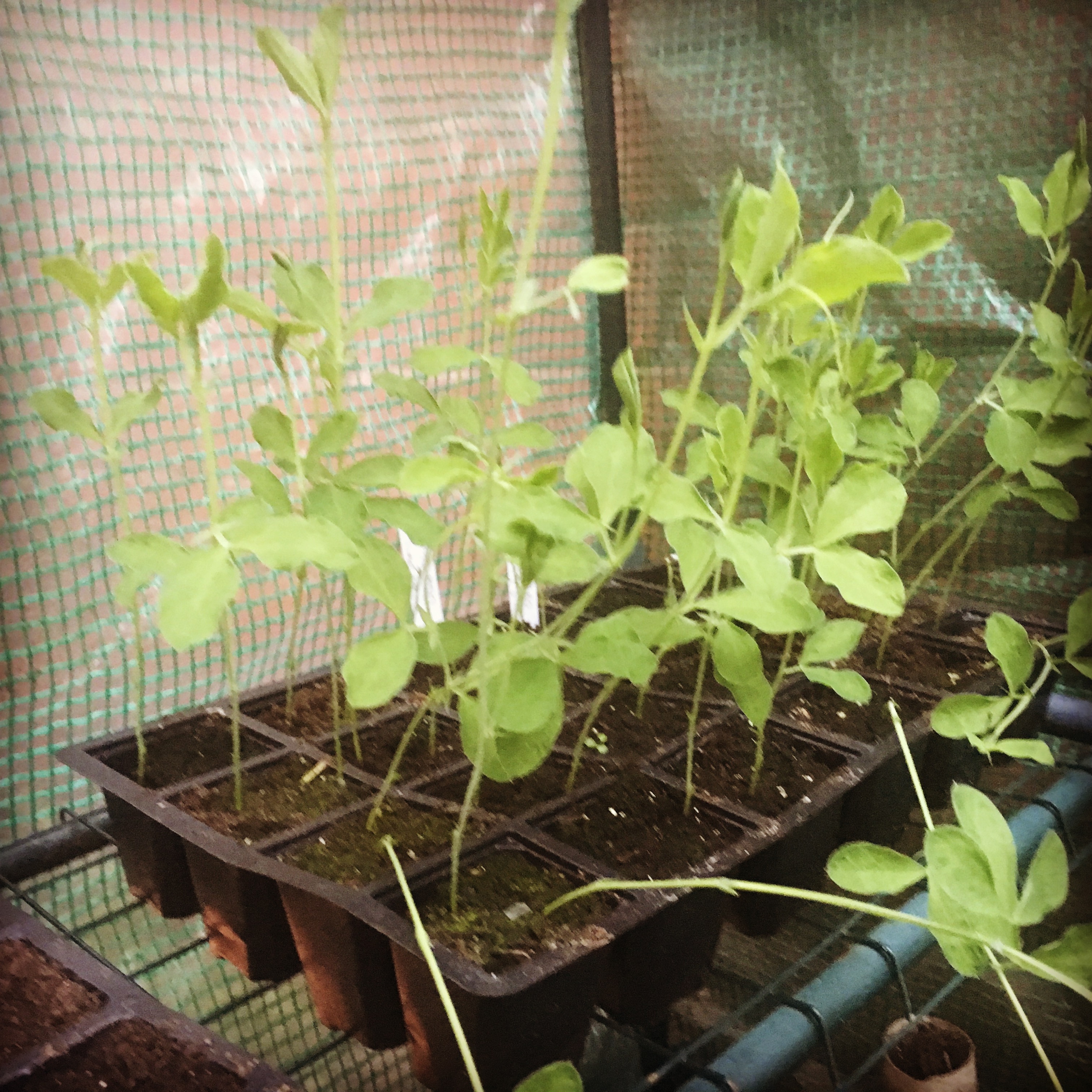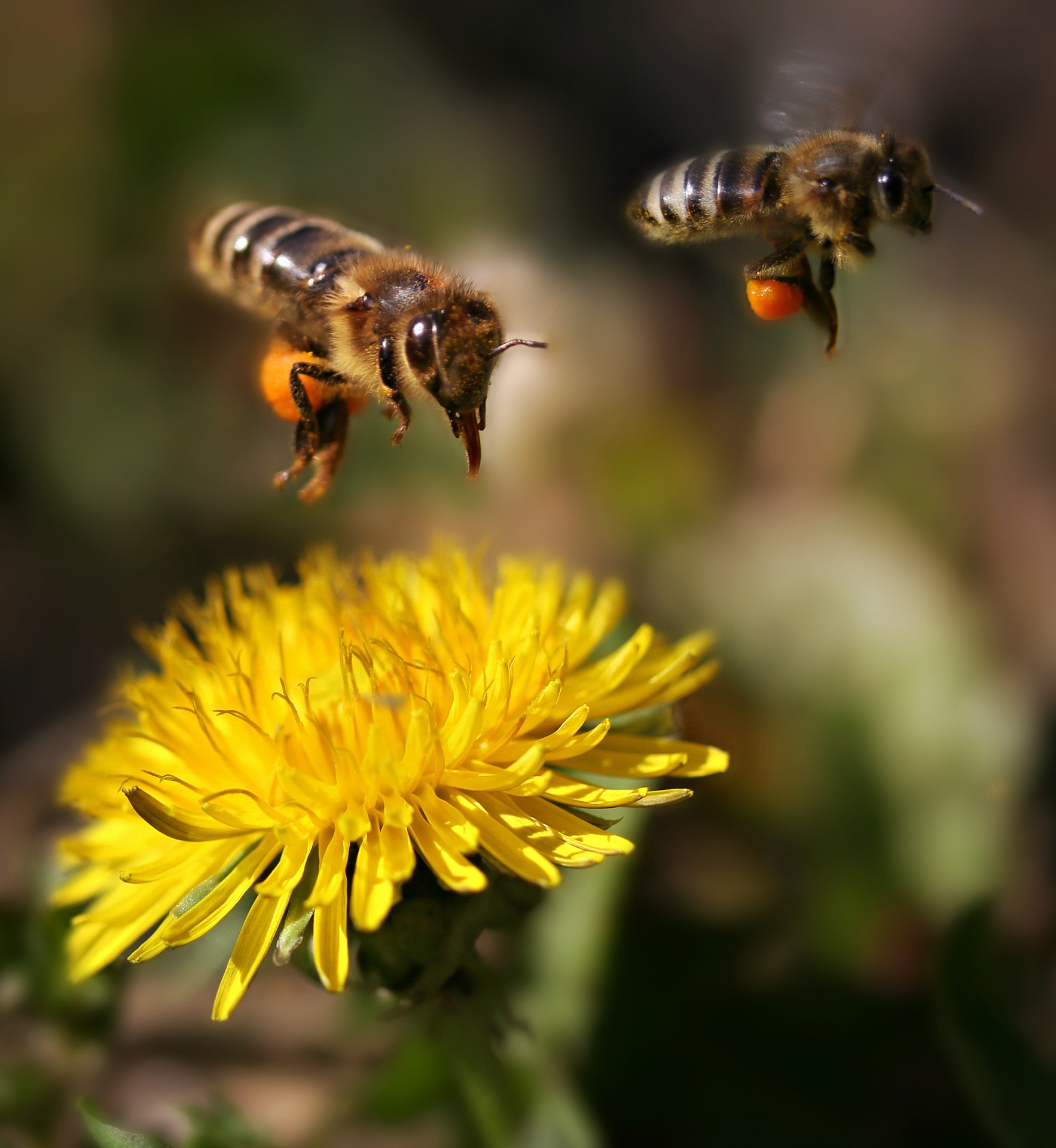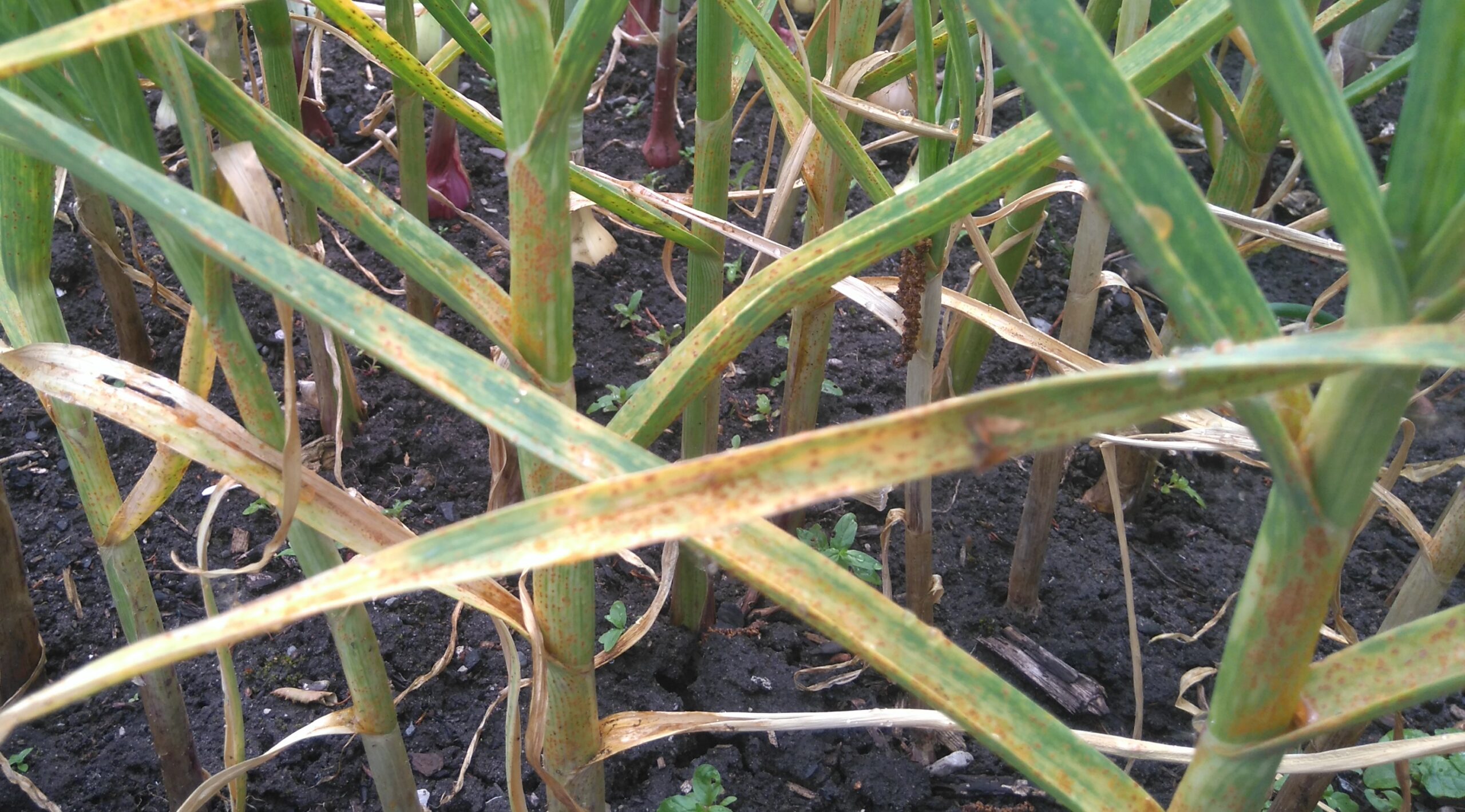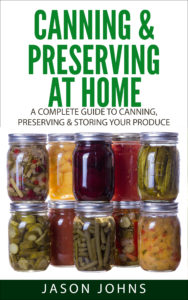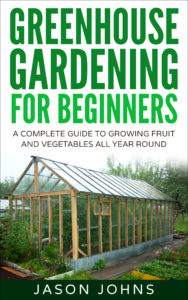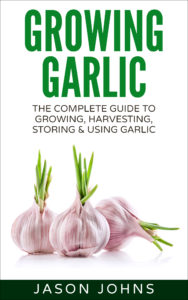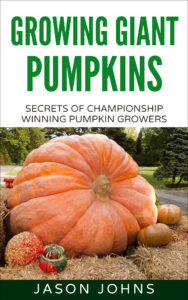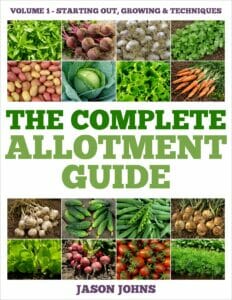April – What To Do In The Vegetable Garden
April is a fun time in the allotment or vegetable garden. Things are starting to grow, but not just the things you want … the weeds start to grow including the dreaded mares or horse tail. This will send up shoots with pods on the end that release spores to spread the plant. If you see any of these, pull them up and put them in a plastic bag and then get rid of them. All the other weeds are going to be growing well, but leave the flowers on the dandelions as these are a vital early season food source for bees. Many of these weeds are actually edible and could make for some free food!
We are starting to get serious now with our planting, it’s full steam ahead with getting seeds in the ground and starting off plants like pumpkins and courgettes.
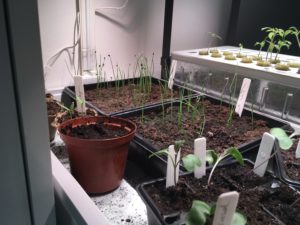
What To Harvest
There will be things you can harvest now apart from weeds … young dandelion leaves make delicious salad greens and nettle tops can be cooked like spinach. Here are some of the things you could be harvesting in April:
There will be some harvesting on the allotment this month from overwinter crops and early spring plantings.
- Asparagus – April is an exciting month as it is the first month where your asparagus is really at its best. Harvest them when they are as thick as your index finger by cutting them with a sharp knife just below the soil. Asparagus is best eaten within a few hours of harvesting when they are at their sweetest.
- Kale – this is probably the last month to harvest kale planted last year. Don’t plant kale again in the same location.
- Leeks – this will be the last chance to harvest leeks from last year. You may have to trim a few layers off, but they will still be edible. Lift them by the end of the month and blanch and freeze any you can’t use.
- Lettuce – lettuces such as cos varieties sown last autumn should be ready to harvest now.
- Rhubarb – rhubarb is ready to harvest this month. Hold on to the base of each stalk and pull with a twist. Cut the leaf off and compost it. The stalks can be used fresh or frozen.
- Rocket – start harvesting young leaves when they are the length of your thumb.
- Salad Leaves – sown earlier in the year, these will be ready to harvest this month.
- Spring Cabbage – some spring cabbages will be ready to harvest. For pointed cabbages, you can either wait until the heads are full formed or pick them when the leaves are still a little loose.
- Spring Cauliflowers – keep harvesting these while the heads are still firm
- Spring Onions – those sown last autumn should be ready to harvest now. Pick them before they grow too big and their flavour becomes overpowering.
- Spinach – if the weather hasn’t been too bad, you may well get the first of your spinach this month. The young leaves are great in salads.
- Sprouting Broccoli – this is probably the last month to harvest sprouting broccoli.
- Swiss Chard – harvest your Swiss chard and leaf beets. Young leaves are best, but older leaves can be eaten if you strip the tough stalk away.
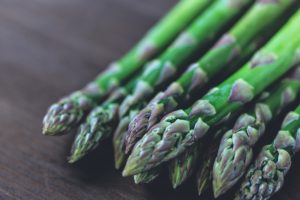
As you can see, there is a lot that you can harvest this month, though a lot of it is clearing space for summer crops. Cover any empty areas of your vegetable garden so that weeds don’t take over and take the time now to dig in some good quality compost or chicken manure pellets to feed the soil ready for the next set up plants.
Vegetable Plant Jobs
In April, the vegetable garden starts to get busy this month as there is a lot to get planting as the weather is warming and the risk of frost is minimal in many areas. Just keep your eye on the weather as sudden frosts can still happen. If there is a frost warning or you feel the temperature is getting too cold, fleece your plants to protect them. A lot of your planting will be done under cover. Even though the weather is improving and feels warmer, avoid the temptation to plant direct unless the seed packet instructions say so.
- Asparagus – asparagus crowns must be planted by the end of the month otherwise it will be too late.
- Aubergines – this is the last month for sowing aubergines as otherwise they will not have enough time to mature and fruit before the end of the growing season.
- Beetroot – you can plant beetroot outdoors this month, though if the soil is cold an wet, cover them with cloches.
- Broad Beans – sow direct outdoors and protect with cloches if it is too cold.
- Broccoli – sow indoors or outdoors, depending on the variety.
- Brussels Sprouts – sow indoors or outdoors, depending on the variety.
- Cabbages – sow indoors or outdoors, depending on the variety.
- Carrots – these can be planted direct this month.
- Celery – sow indoors to plant out in June.
- Chillies/Peppers – keep sowing these indoors.
- Courgettes – plant indoors ready to plant out next month.
- Cucumbers – keep sowing cucumbers indoors.
- French Beans – sow these in containers in your greenhouse for planting out next month.
- Globe Artichokes – offsets from established plants can be cut off and planted to produce new plants.
- Herbs – keep sowing herbs; most herbs can now be sown outdoors.
- Jerusalem Artichokes – plant new tubers by the end of the month.
- Kohl Rabi – transplant young plants started off in the greenhouse.
- Leeks – sow direct outdoors or in containers for planting out later.
- Lettuces – lettuces and leafy salad vegetables can be planted direct this month. If the weather is still cold, cover the seeds until it warms.
- Melons – sow in pots in your greenhouse or indoors and cover with a plastic bag.
- Onions – this is the last month for transplanting seedlings outside or to plant onion sets.
- Parsnips – April is the last month to plant parsnips.
- Peas – plant peas direct, covering them with cloches if it is still cold. Put peasticks in place now, before the plants become too large.
- Potatoes – second early and maincrop potatoes can be planted this month. First early potatoes need to be earthed up to ensure the tubers do not get exposed to the light.
- Pumpkins/Squashes – plant in pots in your greenhouse ready to plant out next month.
- Runner Beans – plant in pots in your greenhouse to get a head start on the growing season. Put the cane supports in place now while the plants are young to avoid damaging growing plants.
- Sweetcorn – as sweetcorn has a long growing season, it can benefit from being started indoors. Use deep pots to start the seeds off; the cardboard insides of toilet rolls are ideal.
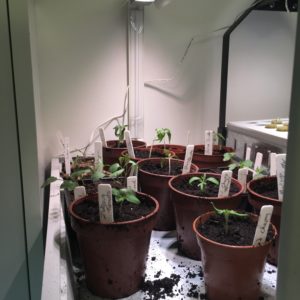
Fruit Tree/Bush Jobs
The fruit garden is starting to burst into life. Check plants such as blackcurrants for aphid infestations as this pest will start to gather on new growth.
- Blackcurrants – feed your blackcurrant bushes with a high nitrogen feed and some blood, fish and bone.
- Blackberries – feed your blackberries in the same way as blackcurrants. Also weed around the canes.
- Planting – although you can’t plant bare root trees or bushes, you can still plant container grown plants. These will be making their way into the shops, so it is a good time to buy some and get them in the ground.
- Pollination – continue to hand pollinate your apricots, peaches and nectarines.
- Pruning – once the leaf buds have opened, cherry, plum, apricots, peaches and nectarines can be pruned.
- Raspberry – weed around your raspberry beds.
- Strawberries – strawberries can be covered to stimulate fruit production as well as fed. New strawberry plants can have flowers removed to allow them to establish themselves fully.
General Jobs
There is a lot to do this month preparing for the busy
- Frost Protection – there is still the risk of frost, so be prepared to cover your plants if there is a frost warning.
- Harden Off Plants – plants raised indoors must be hardened off before planting out otherwise they will struggle to grow or even die with shock from being moved outdoors.
- Pot On Plants – plants that are becoming too large for their pots need to be moved into bigger pots so they can continue growing until they can be put in the ground.
- Seedbeds – continue to prepare your seedbeds, breaking up lumps of earth.
- Seedlings – seedlings in trays or modules can be pricked out and planted in their own pot when they have two leaves. Be very careful when handling young seedlings as they can easily be damaged. They need to be moved into their own pots before they grow too large and become difficult to separate. Handle by the leaves rather than the stem.
- Weeding – keep on top of the weeds as they will be growing like crazy as the weather warms.
Greenhouse and Polytunnel Jobs
Your greenhouse will be filling up with seedlings this month as it is still too cold for many plants outside.
- Cleaning – clean the glass in your greenhouse to let in as much light as possible.
- Guttering – fix guttering to your greenhouse if you haven’t already got some so you can catch water in a water butt. Check your guttering and clean it out of dead leaves and other debris.
- Microgreens – you can grow microgreens in your greenhouse for a tasty treat in just a few weeks.
- Sweet Peas – plant sweet peas in deep pots and keep them frost free.
- Ventilation – open vents, doors and windows on warm days for good air circulation.
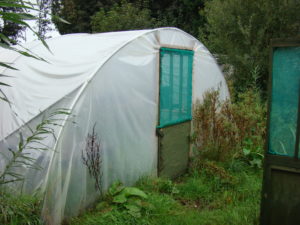
So you can see that April is a busy month, there is a lot you can do and the garden will be springing into life. Hopefully, you have taken some measures to keep the weeds down and reduce the amount of work you have to do there so you can spend more time enjoying your gardening activities!

